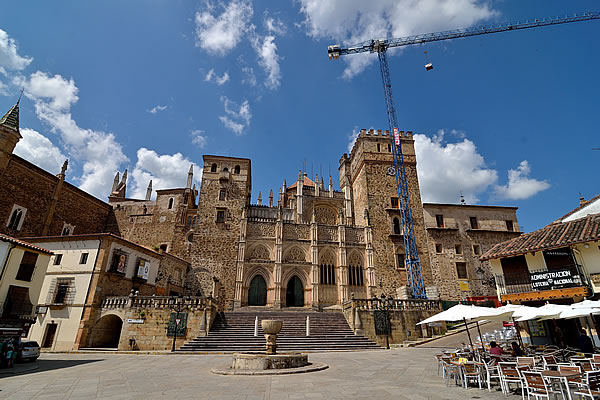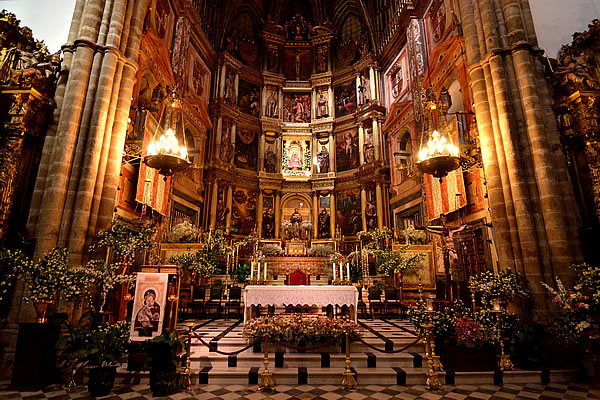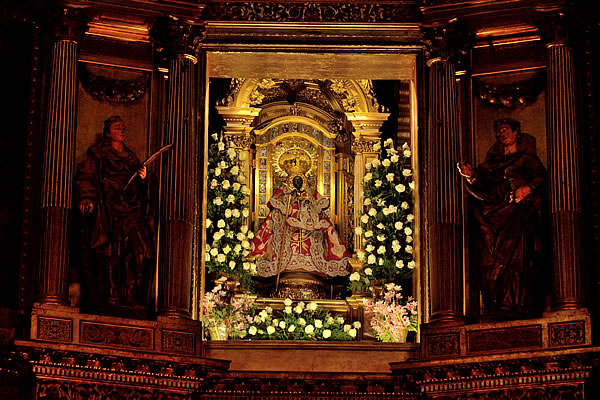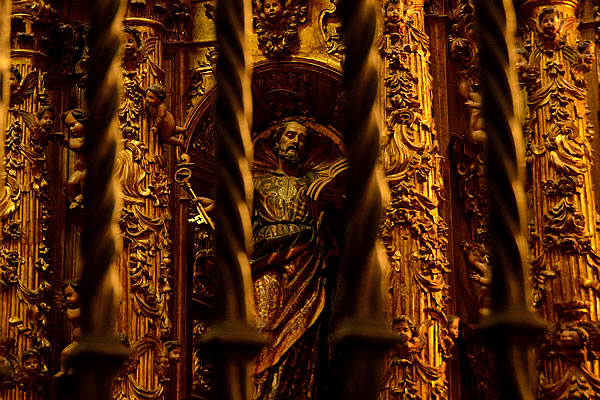

| In the footsteps of Fernando, Isabel and Columbus | |
Horcajo de los Montes (Spain), May 22nd 2016
|
|
|
|
|
Spain is touristy; mega touristy. Especially the coasts and major cities are slowly but surely beginning to become a tourist disaster. A spontaneous visit to for example the palace complex 'El Alhambra’ in Granada is not possible anymore. Tickets to the main attractions must be pre-booked nowadays. This means that a tourist trip to Spain should be planned almost entirely in advance, making it more like a military operation than a relaxed holiday. And that's a shame. And if you managed to get a ticket on the short-term, probably after spending some time in a long queue, then you have to share the attraction with thousands of other people, of which many are part of tour groups, who for some reason think they have more privileges than other people, and are not ashamed to push you away to make a quick picture with their iPhone or iPad before the group moves on. Not a very nice experience. But what else can you do? You want to see some of these famous landmarks. Or maybe not? We have to admit that we, more and more often, decide to skip the ‘famous’ attractions. But it can be different. With a little searching and occasionally some luck on your side you can still find very nice and special places in Spain that do not lie on the busy tourist route. One of those places for example, is the small town of Guadelupe, in the eastern part of the Extremadura. This tiny town is home to the fabulous Real Monestario Santa Maria de Guadelupe. Now we hear people think, "A monastery? What is interesting about that?". But this monastery is different. Not only is the history of the monastery very interesting, it also has art works in its possession of great masters such as Goya, El Greco and Zubarán. And most of these art works are still at their natural place, right where they are already for centuries. So, no typical museum experience. Additionally, you can see a small ivory statue of Jesus on the cross that is attributed to Michelangelo. But the monastery is especially just beautiful. Walking through the magnificent halls of the complex makes you think how extravagant this beauty and riches must have been during the heyday of the monastery in the Middle Ages, in stark contrast to the extreme poverty and misery that existed outside the gates of the complex. |
|
 |
|
On the way from the campsite to the monastery, you pass this fabulous viaduct |
|
The monastery is one of the most important pilgrimage destinations in Spain. That has everything to do with a small, black sculpture of cedar wood from the last years of the 12th century, representing the Virgin Mary. Legends even tell that the statue dates from the 1st century AD and was constructed by the Apostle Luke. When Lucas died, the statue was buried with him, and because the body of Lucas has been moved several times, the statue moved with him and eventually ended up in Sevilla. In 714 AD, the statue was taken by Christian clerks from Sevilla to prevent it from falling into Islamic hands. The 8th century was the century during which Islamic armies came from northern Africa and conquered parts of present-day Andalusia. The statue was buried in a riverbed in present-day Guadelupe and it lasted until the end of the 13th century before the statue was found by a shepherd, after Mary had appeared to him, while he was looking for a lost cow. At the spot where the statue was found, a hermitage for the statue was constructed, which eventually became the fabulous monastery. That’s what the legend tell us about the origin of the small wooden statue of Mary, also known as the Lady of Guadelupe. |
|
 |
|
The town of Guadelupe is built around the monastery |
|
The monastery and the image of the Lady of Guadelupe have always had great significance for the Christian faithful of the Iberian Peninsula. Not only did Fernando (King of Aragon) and Isabel (Queen of Castile) undertake a pilgrimage to this place after they had expelled the Moors from Granada, Columbus also came to visit the image to thank Mary for the fact that he had only barely survived his first discovery voyage. It gives a strange feeling to face the same statue as these persons of historical importance did, who undoubtedly have stood on exactly the same spot to admire the statue. This statue of Mary also became the patron saint for the Spanish overseas territories (Hispanic countries) and for that reason, the monastery still attracts many pilgrims, especially Catholic believers from Latin America and the Philippines. Guadelupe is located on an alternative route between Madrid and Cordoba, and in that sense easily to fit in a trip to southern Spain. However, you are not allowed to explore the monastery on your own, but you need to join a guided group (starting every half hour). The guide speaks only Spanish, but don’t let that put you off. And for the believers among us, there is an opportunity at the end of tour, to kiss the robe of the Lady of Guadelupe. And then you truly step in the footsteps of King Fernando, Queen Isabel and explorer Columbus. |
|
 |
|
The altarpiece of the monastery's church |
|
 |
|
High in the altarpiece is the black statue of the Virgin Mary |
|
 |
|
Extravagant art in the monastery's church |
|
 |
|
Guadelupe has also a nice campground |
|
 |
|
From Guadelupe you can make nice daytrips in the area, like to this village of Cabañas de Castillo © copyright - Babakoto.eu / 2016 |
|